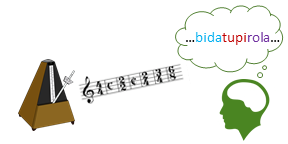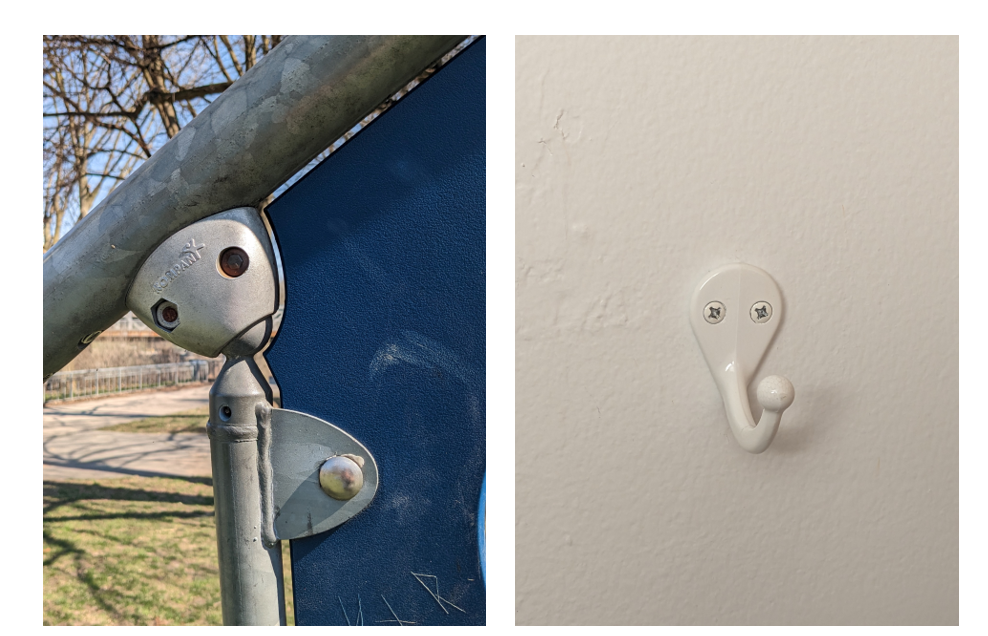Here, you can learn about some of the current research projects in the lab. If you are particularly interested in any of these lines of work, feel free to contact us for more information. Additionally, some of these projects have web-based components, so if you are interested in getting a more first-hand feel for some of these projects, we encourage you to participate.

Learning how different sounds unfold over time is a critical component of both speech and music understanding. How are listeners able to learn and remember such complex auditory sequences? Some of our current research examines how rhythmic entrainment may facilitate complex auditory sequence learning. Entrainment can be defined as the process that allows two independent rhythmic events to synchronize with one another. For example, when we listen to music, we can often tap along to the "beat" of the music, identifying "strong" (more stressed) and "weak" (less stressed) events. This entrainment between perceptual and motor systems may allow individuals to optimize how they anticipate, attend to, and ultimately learn complex sequences. Ongoing work in this area includes examining whether rhythmic entrainment can help or hinder the statistical learning of speech, and whether rhythmic entrainment can influence aspects of auditory perception through predictive processing. Overall, this work aims to use musical rhythms to optimize auditory sequence learning across the lifespan.
If you ask a musician for an example of a musical talent or gift, one of the most common answers would be absolute pitch (also known as perfect pitch), and for good reason. Typically defined as the ability to name or produce musical notes seemingly "out of thin air," absolute pitch is thought to be exceedingly rare. Absolute pitch has fascinated musicians, scholars, and the general population since it was first formally described, largely because of its conceptualization as a rare and enigmatic talent. Some of our current research examines fundamental aspects of absolute pitch, such as how it is distributed in the population. Are there really two, clearly distinct groups of listeners - those with and those without absolute pitch - or is absolute pitch ability more continuously distributed in the population? To help us answer this question, we encourage you to test your absolute pitch ability with our online assessment. Other relevant topics we are addressing in this research area include whether implicitly acquired pitch categories are related to the phenomenon of absolute pitch, whether specific environmental experiences can affect pitch perception for individuals with absolute pitch, the degree to which absolute pitch is trainable in adulthood, and the potential benefits of absolute pitch beyond music processing.
Many individuals seek out the sounds of nature (e.g., birdsong, the babbling of a brook) because of their presumed restorative properties. Relative to urban environments, natural environments have been shown to increase positive affect, decrease negative affect, lower stress, and even temporarily improve attentional performance. Some of our current research examines conditions under which nature sounds can confer restorative benefits. Some specific research questions in this area include: To what extent can environments be classified along a restorative continuum? Are nature sounds and images still restorative if they are perceptually degraded? Are restorative effects mediated by how much sounds are liked? To what extent do natural environments facilitate wise decision making?

Humans are remarkably good at detecting patterns in their environment. Sometimes, however, we end up seeing patterns or meaning in places where none exists. The tendency to see patterns in noise is a phenomenon referred to as pareidolia, and it can entail things such as hearing your name in noise or seeing objects in clouds. Our research has focused on a specific kind of pareidolia in which individuals see faces in inanimate objects. Pareidolia provides an excellent framework for understanding how humans impose structure and meaning on their perceptual inputs. Current projects in the lab include examining individual differences that relate to the tendency to experience pareidolia, the development of a performance-based (visual categorization) task sensitive to individual differences in experiences of pareidolia, and how the experience of pareidolia relates to changes in mood.
The recognition of speech is fundamental for so many day-to-day activities that we often take this skill for granted, particularly with respect to the diverse challenges that must be overcome for comprehension. Consider the simple example of watching a movie. In this scenario, we must selectively attend to the dialogue by filtering out "irrelevant" auditory information (e.g., underscoring music). Beyond this selective filtering, successful understanding is also influenced by factors such as the accent of the character and the current cognitive functioning of the listener. This scenario illustrates that the listening effort required to understand speech depends on the interaction between perceptual, cognitive, and linguistic systems. When perceptual input does not align with a listener’s expectations (e.g., because the speech is accented), greater demands are placed on cognitive resources to determine what was said Individuals whose cognitive capabilities are consistently exceeded by the demands of the listening environment report mental fatigue when trying to understand speech, leading to increased anxiety and depression. These issues are often magnified in elderly listeners, who exhibit age-related declines in both sensory and cognitive abilities. This line of research thus aims to better characterize the construct of listening effort, as well as investigate methods for reducing listening effort in naturalistic speech comprehension.